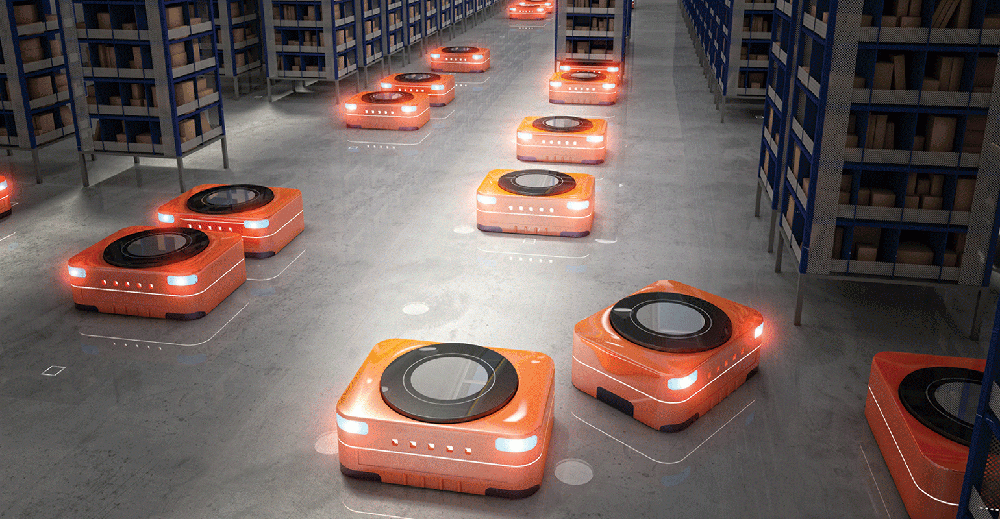How AI revolutionizes the way we solve logistics problems
How AI revolutionizes the way we solve logistics problems
The current AI wave of hype is quite different from the previous ones: technological, business and societal conditions have never been more favorable for the widespread use and adoption of AI.
On the consumer market, artificial intelligence is already here to stay. We use it on a daily basis often even without our knowledge. However, leading industries - including logistics - are still well into their AI journey. We would like to foresee this journey to show you how to effectively implement various artificial intelligence solutions for the current problems of logistics.

Predictive solutions with huge data demands
Significant improvements can be reached with the feature of artificial intelligence in which it performs the best: creating accurate predictions. However, these predictions are only as good as the data made available to it. Fortunately, logistics is an area where a huge quantity of data is available and generated every day. Based on these, a dedicated AI can give an accurate picture of the demand and capacity needs of goods or vehicles, can be a key source of information for risk management and can even reduce operating costs by optimizing processes and routes.
For the proper functioning of such a predictive algorithm, it is indispensable to properly collect and organize the data. The most uncomplicated and obvious way of collecting data is manually sorting and filtering it, but involving any human factor always means a lower or higher error rate. The semi-automated method of data mining can be a great solution if we want to exclude human interaction. During this, artificial intelligence-based algorithms locate relationships and trends in data, so that the valuable data can be filtered out for the predictive system.
There is one problem with the processing and usage of data at this level: these figures cannot indicate the outstanding trends caused by the hype periods of humans. To understand this, let’s recall the fidget spinner boom of 2017. The toy suddenly and unexpectedly sold an estimated 50 million units in a period of several months, and this number might have been even higher with further optimized supply. As restocking would take much more time with ocean transportation, there was an eminent demand for air freight in these months. Such spikes can hardly be deduced from transport and demand data. However, the content shared on various social media platforms has provided a clear signal of the emerging popularity wave. The massive volume of content shared on social media makes it impossible for people to continuously track and evaluate them, but an artificial intelligence equipped with proper semantic and NLP (Natural Language Processing) skills could handle the task with ease.
Seeing, speaking and thinking AI robotics
Modern logistics has to give a solution to many challenges: buying habits are changing, the number of packages to be handled is constantly increasing, so in the shortage of physical labour, there is a huge demand for alternative solutions. This demand can be easily met in the future by autonomous robots driven by artificial intelligence. Machine vision and voice control are essential parts for the proper operation of these robots, which can complement the capabilities and capacity of today's workforce.
Automatic sorting
All logistics centers face a huge challenge when they need to sort and group disordered packages and pallet-based shipments. AI-based robotics systems can revolutionise the process of this. By mixing the capabilities offered by machine vision and machine learning, consignments can be sorted out quickly and precisely, with a much lower error rate compared to humans. With the growing number of online purchases, this process is becoming more and more burdensome, requiring the continuous adoption of the latest technologies.
Visual inspection using machine vision
Most of the processes in logistics can be monitored by machine vision. A complex system of numerous cameras with continuous communication among them can provide automatic supervision in logistics centers, which is especially vital when it comes to the automation processes mentioned above. You can get instant notification for example in the following cases:
- Barcode is missing or damaged
- The received goods are not the ordered ones
- A product is missing
- Commodities are in wrong sorting
- Wrong address is displayed on a package
In addition to logistics centers, you can also monitor goods and means of transport during the transportation itself. This way you can eliminate abnormal operation and various deficiencies.
Voice control in the supply chain
Systems based on voice control have been on the consumer market for quite some time. When mentioning these systems, most people would think about virtual personal assistants, although speech recognition systems can be a great benefit within the supply chain as well. In practice, they can greatly facilitate and speed up the manual recording of tasks, shipping orders, status changes or other information, as well as recovering them by searching or filtering. Systems capable of performing these tasks have already existed, but they only worked on specific commands with a bad recognition rate. An advanced voice recognition system - such as Régens' self-developed artificial intelligence - provides a much easier way to perform such tasks.


